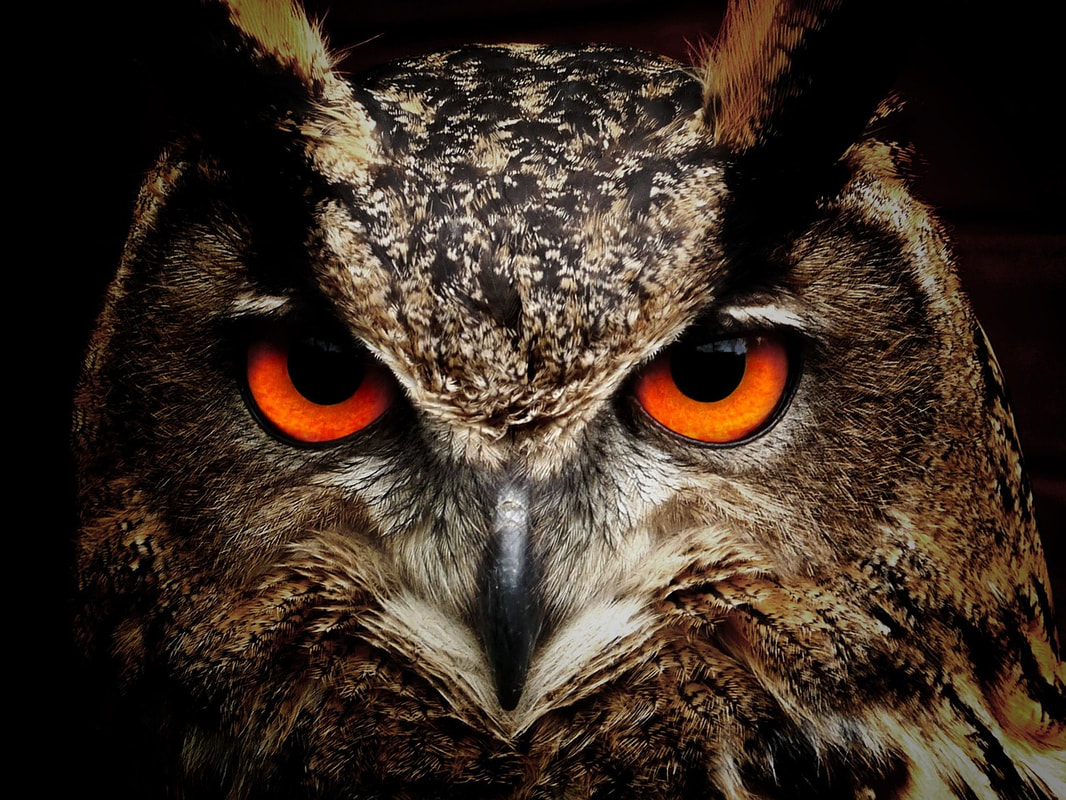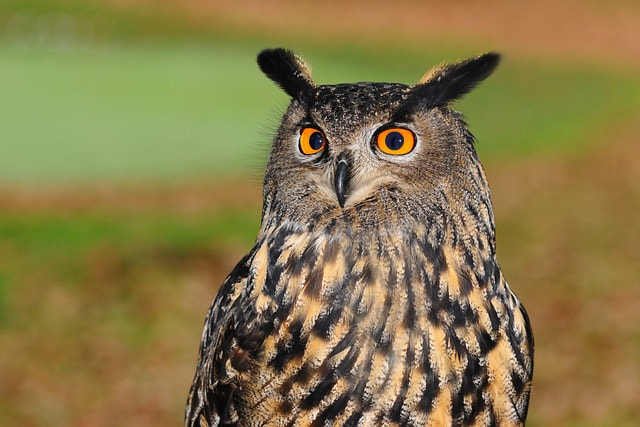OWLS
Unveiling the Enigmatic World of Owls: Masters of the Night SkyWith their striking appearance and mysterious nocturnal habits, owls have fascinated and captivated humans for centuries. These majestic birds of prey possess a myriad of unique features and adaptations that enable them to thrive in the darkness of the night.
Owls are Formidable Silent HuntersOne of the most remarkable characteristics of owls is their ability to fly in absolute silence. Owls possess specialised feathers that have fringed edges, allowing them to navigate through the air without producing any sound. This stealthy flight enables them to surprise their prey, swooping down silently and efficiently to capture small mammals, birds and insects.
Owls' Remarkable VisionOwls possess exceptional vision, which is essential for their nocturnal lifestyle. Their large, forward-facing eyes provide them with binocular vision, enabling precise depth perception. Additionally, their eyes are packed with rod cells, making them incredibly sensitive to low light conditions. Some owl species, such as the barn owl, can see in near-total darkness, relying on their acute hearing to locate prey.
Owls' Incredible HearingWhile their vision is impressive, owls' hearing capabilities are nothing short of extraordinary. They have asymmetrical ear placements on their head, with one ear positioned higher than the other. This unique arrangement allows them to locate the precise direction of sounds with remarkable accuracy. Owls can even hear the movements of small rodents under thick vegetation or snow, giving them a distinct advantage when hunting.
The Stealthy Plumage of OwlsThe soft feathers that cover an owl's wings and body play a crucial role in their stealth and survival. The feathers are specially designed to minimise turbulence and reduce noise during flight. These velvety feathers not only facilitate silent movement but also provide excellent insulation, helping owls maintain their body temperature and fly effortlessly through the chilly night air.
The Diverse Adaptations of OwlsOwls exhibit remarkable diversity in their adaptations, with over 200 species found across the globe. From the diminutive Elf Owl, standing a mere five inches tall, to the magnificent Great Grey Owl, with a wingspan of up to five feet, owls occupy a wide range of habitats and exhibit various hunting strategies. Each species has its unique set of characteristics and traits, making them a fascinating group to study.
Owls' Cultural SignificanceOwls have long held symbolic importance in various cultures around the world. In ancient Greek mythology, owls were associated with wisdom and knowledge and were often depicted alongside the goddess Athena. Conversely, in some African and Native American cultures, owls are considered symbols of death or ill omens. These cultural beliefs have contributed to the mystique and allure surrounding these nocturnal creatures.
Owls are truly remarkable creatures, embodying a perfect blend of grace, mystery and adaptability. Their silent flight, acute vision and exceptional hearing make them masters of the night sky. As we continue to explore and appreciate the natural world, let us not forget the awe-inspiring wonders that owls bring to our planet, serving as a constant reminder of the beauty and diversity of life that surrounds us. |




